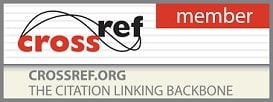- Multidisciplinary Journal
- Printed Journal
- Indexed Journal
- Refereed Journal
- Peer Reviewed Journal
ISSN Print: 2394-7500, ISSN Online: 2394-5869, CODEN: IJARPF
IMPACT FACTOR (RJIF): 8.4
Vol. 5, Issue 11, Part B (2019)
Prevalence of musculoskeletal symptoms among car mechanics in Pimpri-Chinchwad municipal Co-orporation, Pune
Prevalence of musculoskeletal symptoms among car mechanics in Pimpri-Chinchwad municipal Co-orporation, Pune
Author(s)
Abstract
Introduction: The most commonly reported occupational health problems by the mechanics were musculoskeletal diseases (87.4%), and this could be due to the discomforting positions they are forced to adapt in the process of their work [1]. When asked which symptoms had been most troublesome at work most mechanics reported symptoms from the lower back, upper back, shoulders and neck [2].Car mechanics mostly work standing on a floor made of cement or of similar hard materials. This work requires that mechanics have to work for prolonged periods with their spine flexed forward and/or with their arms flexed at or above shoulder level. These working postures are strenuous for the back and shoulders [2].
Introduction: The most commonly reported occupational health problems by the mechanics were musculoskeletal diseases (87.4%), and this could be due to the discomforting positions they are forced to adapt in the process of their work [1]. When asked which symptoms had been most troublesome at work most mechanics reported symptoms from the lower back, upper back, shoulders and neck [2].Car mechanics mostly work standing on a floor made of cement or of similar hard materials. This work requires that mechanics have to work for prolonged periods with their spine flexed forward and/or with their arms flexed at or above shoulder level. These working postures are strenuous for the back and shoulders [2].
AIM: To assess the prevalence of musculoskeletal symptoms among car mechanics.
Objective: To assess the musculoskeletal symptoms in various body parts among car mechanics. To compare relation between age and pain. To conduct the statistical result of the prevalence. Methodology: An observational cross-sectional study was performed on 100 car mechanics, with minimum of 5 years of work experience and of age group ranging between 20-40 years, with minimum of 8hrs of working period. They were assessed on the basis of Standardized Nordic questionnaire.
Data Analysis and Result: Statistical analysis was done using Chi square test. Out of the 100 subjects 84% had reported with ‘Pain’ whereas the rest 16% reported with ‘No pain’. In the present study, majority of them experienced pain in the lower back (53%) followed by- wrist (32%), ankle (23%), knees (20%), elbow (13%) and neck and shoulder (12%) each. Many of them complained of experiencing pain as a barrier in carrying out their normal activities (household work and job activities)-84% reported pain as a barrier in lower back, wrist 77%, ankle 63% and 94% in knee. Owing to the complaints reported, it was studied that very few visited a physician, for: lower back-39%, wrist-38%, knees-37%, ankle-16%. In the last 7days when enquired about their pain, major complains reported were of-Lower back > wrist > ankle > knees.
Conclusion: The prevalence of MSS obtained in car mechanics was of 84% and the ratio of LBP in these subjects was high (53%) compared to the other joint involvement. With the p value being 0.23, the relation between the age group and pain stands insignificant as the number of subjects in each group were unequal.
Pages: 80-85 | 854 Views 145 Downloads
How to cite this article:
Celeste James, Dr. Varsha A Kulkarni. Prevalence of musculoskeletal symptoms among car mechanics in Pimpri-Chinchwad municipal Co-orporation, Pune. Int J Appl Res 2019;5(11):80-85.






 Research Journals
Research Journals